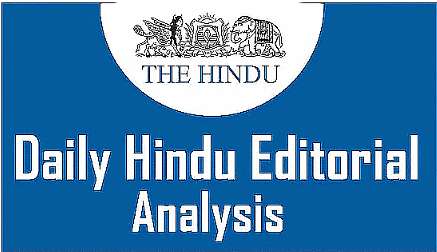The Hindu Editorial Analysis- 28th June 2024 | Current Affairs & Hindu Analysis: Daily, Weekly & Monthly - UPSC PDF Download

Net damage
Why in News?The resumption of Fishing of India’s eastern coast including the Palk Bay, after the annual 61-day ban on fishing, has led to the death of a sailor from the Sri Lanka Navy. The Sri Lankan Navy had carried out an operation on June 25 morning to “chase away a cluster of Indian poaching trawlers” in Sri Lankan waters of Kankesanthurai, near Jaffna.
Overview of India’s Coastal Plains
A. Western Coastal Plains
Submerged Coast: These plains are submerged coastal plains, which make them a narrow belt and have natural conditions favorable for port development. Notably, the ancient city of Dwaraka on the west coast is submerged.
Geographic Extent: These plains stretch from the Gujarat coast in the north to the Kerala coast in the south.
Divisions:
- Kachchh and Kathiawar Coasts (Gujarat):
- The Kutch Peninsula was once an island surrounded by seas and lagoons, but later filled with material from the Indus River. The Great Rann and its southern extension, the Little Rann, are located on the seashore and southeast of Kachchh. South of Kachchh lies the Kathiawar Peninsula, with small streams flowing from the highland in the Mandav Hills' center in all directions.
- Gujarat Plain: Lies to the east of Kachchh and Kathiawar, sloping toward the west and southwest. The Narmada, Tapi, Mahi, and Sabarmati rivers formed the plain. Although the eastern portion of this plain is suitable for farming, most of it is covered in wind-blown loess towards the ocean.
- Konkan Plain: Spread from Daman to Goa, this plain is 50 to 80 km wide, located south of the Gujarat plain.
- Karnataka Coastal Plain: Spread from Goa to Mangalore, this is a narrow plain with a width of 30 to 50 kilometers. The Western Ghats’ streams sometimes descend along precipitous hillsides to create waterfalls. When the Sharavati flows down such a steep slope, it creates the 271 m-tall Gersoppa (Jog) Falls, a spectacular waterfall.
- Kerala Plain (Malabar Plain): Stretches between Mangalore and Kanyakumari. It is wider than the plain of Karnataka and sits at a lower elevation. Along the Kerala coast, distinctive features include lagoons, backwaters, and spits.
- Kachchh and Kathiawar Coasts (Gujarat):
Important Natural Ports: Kandla, Mazagaon, JLN Port (Navha Sheva), Marmagao, Mangalore, Cochin, etc.
Topographical Variation: The western coastal plains narrow in the middle and broaden towards the north and south. Rivers do not form deltas.
Kayals: The Malabar coast is known for its “Kayals” (backwaters), used for fishing and tourism. The Nehru Trophy Vallamkali (boat race) is held in Punnamada Kayal in Kerala.
B. Eastern Coastal Plains
Emergent Coast: These plains are emergent coasts and are broader than the western coastal plains. Because of this, there are fewer ports and harbors along this coast.
Division of Eastern Coast: The eastern coastal plains include the Northern Circar in the northern part and the Coromandel Coast in the southern part.
Delta Formation: Rivers flowing eastward into the Bay of Bengal form well-developed deltas, including the Mahanadi, Godavari, Krishna, and Kaveri deltas. Lake Chilika (Odisha), along the eastern coast, is the largest saltwater lake in India lying south of the Mahanadi delta.
Extended Continental Shelf: Due to its emergent nature and extended continental shelf, there are fewer ports and harbors along this coast, making it a challenge for port development.
Odisha’s Hide and Seek Beach: Chandipur Beach, where sea water retreats inside the sea from 1 km to 5 km every day and then comes back to the shore slowly during high tide.
Conclusion
India's coastal plains, encompassing both the western and eastern regions, present a mix of natural beauty and economic promise. The western coast is characterized by submerged plains that are perfect for port development and feature picturesque backwaters. In contrast, the eastern coast is known for its emergent plains with fertile deltas, though it offers fewer opportunities for port development. Despite these distinctions, both coastal regions play vital roles in enhancing India’s cultural heritage, economic growth, and environmental richness.
|
38 videos|5288 docs|1117 tests
|
















